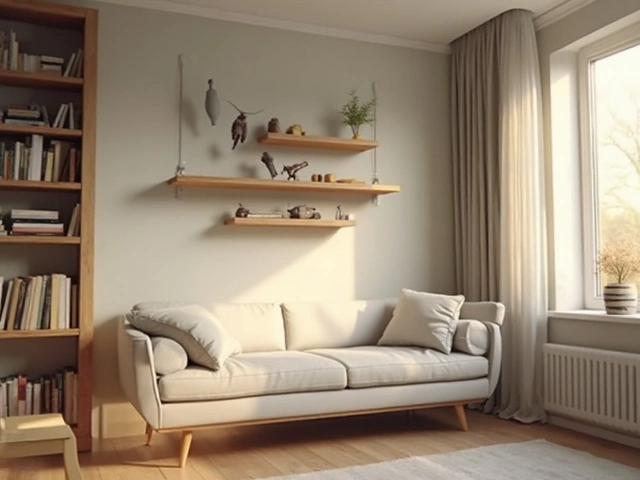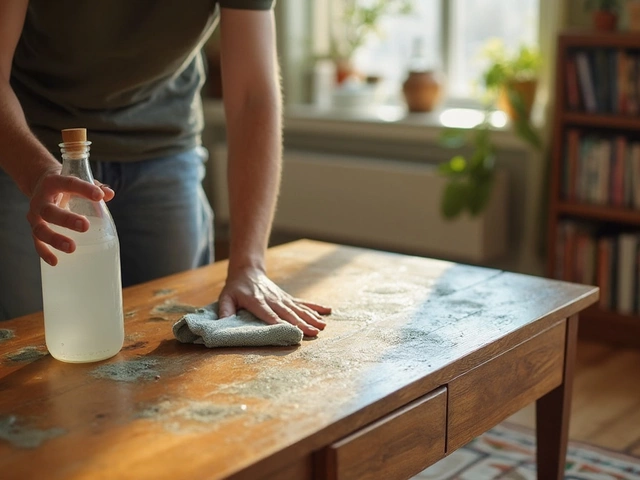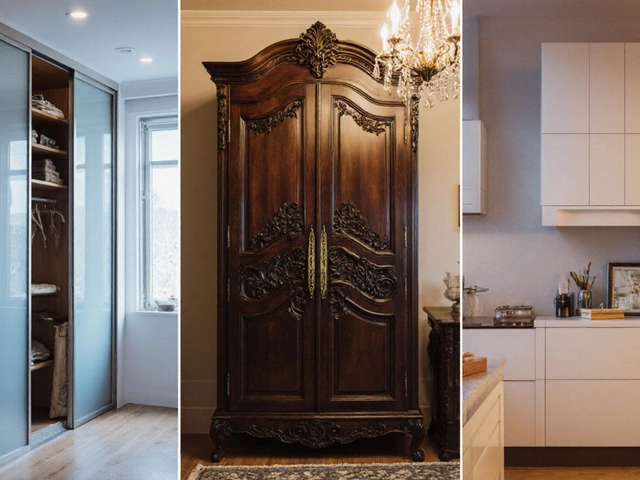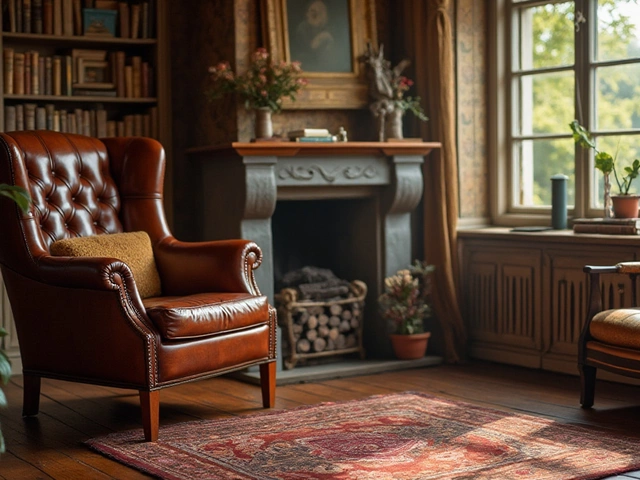 18
Nov,2025
18
Nov,2025
Storing furniture isn’t just about tucking it away-it’s about keeping it safe from dust, moisture, pests, and damage. If you’ve ever opened a storage unit to find a sofa covered in mildew or a wooden table with scratches from plastic wrap, you know how easy it is to make mistakes. The right cover makes all the difference. So what do you actually put over furniture in storage? The answer isn’t just plastic. It’s about matching the material to the furniture type, the storage environment, and how long it’ll sit there.
Why Covering Furniture Matters
Leaving furniture uncovered in storage is like leaving your car outside in a storm. Dust settles. Humidity builds. Temperature swings cause wood to swell and crack. Fabric attracts moths. Metal rusts. Even in climate-controlled units, air circulation carries particles that scratch surfaces over time.
Real-world damage isn’t always dramatic. It’s the faint yellowing on your ivory linen armchair after six months. It’s the sticky residue left by cheap plastic sheeting on your teak dining table. It’s the tiny holes in your velvet headboard from carpet beetles. These aren’t accidents-they’re preventable.
Best Materials to Use
Not all covers are created equal. Here’s what actually works, based on material science and real storage conditions.
- Breathable cotton or canvas drop cloths - These are the gold standard for upholstered furniture. Cotton allows air to flow, which stops mold and mildew from forming. They’re thick enough to block dust but won’t trap moisture like plastic. Look for untreated, 100% cotton drop cloths sold at hardware stores. Avoid bleached or chemically treated versions-they can stain fabric over time.
- Non-woven polypropylene furniture covers - These are lightweight, water-resistant, and breathable. They’re commonly sold as moving blankets or storage covers. Brands like U-Haul and StorageShield make these. They’re ideal for sofas, chairs, and beds. Unlike plastic, they don’t create a greenhouse effect inside.
- Microfiber cloths for delicate surfaces - Use these on glass tops, polished wood, or lacquered finishes. They’re lint-free and won’t scratch. Drape them loosely over surfaces before adding a larger cover on top.
- Heavy-duty plastic (only as a last resort) - Vinyl or polyethylene plastic should never be used directly on fabric or wood. It traps moisture and causes condensation. But if you’re storing in a damp basement or outdoor shed, you can use plastic as an outer layer over a breathable inner cover. Think of it like a raincoat over a t-shirt-not the shirt itself.
One common mistake? Using trash bags. They’re not designed for long-term storage. They tear easily, don’t breathe, and often leave a sticky residue that’s impossible to remove from fabric or wood.
How to Cover Different Types of Furniture
Each piece needs a different approach. Here’s how to handle the most common items.
Upholstered Furniture (Sofas, Chairs, Ottomans)
Start by vacuuming thoroughly-dust and crumbs attract pests. Remove any removable cushions and store them separately in breathable cotton bags. Drape a cotton drop cloth or non-woven cover over the entire piece. Tuck the edges loosely under the frame so wind or movement doesn’t pull it off. Don’t stretch the fabric tight-it needs room to breathe. If you’re storing for more than six months, place silica gel packs inside seat cushions to absorb moisture.
Wooden Furniture (Tables, Dressers, Bookshelves)
Wood hates humidity. Before covering, wipe down all surfaces with a dry microfiber cloth. Apply a thin layer of furniture wax or beeswax polish-it creates a barrier without sealing the wood. Never use silicone-based sprays; they leave a greasy film that attracts dust. Cover with a cotton or polypropylene cover. Avoid plastic wrap entirely. For extra protection, place felt pads under legs to prevent scratches on the floor. Stack items with cardboard or foam padding between them to prevent dents.
Metal Furniture (Frames, Chairs, Side Tables)
Metal rusts fast in damp conditions. Clean with a dry cloth and check for any signs of corrosion. If you find rust, lightly sand it off and apply a thin coat of clear nail polish or rust-inhibiting spray. Cover with a breathable fabric. If storing in a garage or shed, elevate the piece off the concrete floor using wooden pallets or plastic risers. Concrete wicks moisture upward-even in dry climates.
Glass and Mirror Surfaces
Wrap glass tabletops or mirror fronts with acid-free tissue paper first. Then cover with a microfiber cloth. Secure the cloth with painter’s tape (not duct tape-it leaves residue). Place a padded cover over the top. Never stack heavy items on top of glass without proper padding.

What NOT to Use
Some things seem practical but cause more harm than good.
- Plastic wrap or cling film - Traps moisture. Causes mold on fabric and warping on wood.
- Old bedsheets - Often contain detergent residue or fabric softener that stains over time.
- Duct tape - Leaves sticky gunk on wood and fabric that’s nearly impossible to remove.
- Garbage bags - Too thin, tears easily, and releases chemicals that can discolor finishes.
- Waxed paper - Not breathable. Can stick to finishes in heat.
Storage Environment Tips
Your cover is only as good as the space it’s in. Here’s how to set up a safe storage zone.
- Climate control is non-negotiable - If you’re storing for more than three months, choose a climate-controlled unit. Temperature swings above 75°F or below 50°F damage wood and glue. Humidity above 60% invites mold.
- Elevate everything - Never place furniture directly on concrete. Use wooden pallets, plastic furniture risers, or even stacked cardboard boxes. Moisture rises from the ground-even in dry areas.
- Leave space for air - Don’t pack items tightly. Leave at least 2 inches between pieces so air can circulate.
- Use moisture absorbers - Place silica gel packs or activated charcoal bags in corners of the unit. Replace them every 3-4 months.
- Check every 60 days - Open the unit briefly to let fresh air in. Look for signs of dampness, insects, or discoloration.
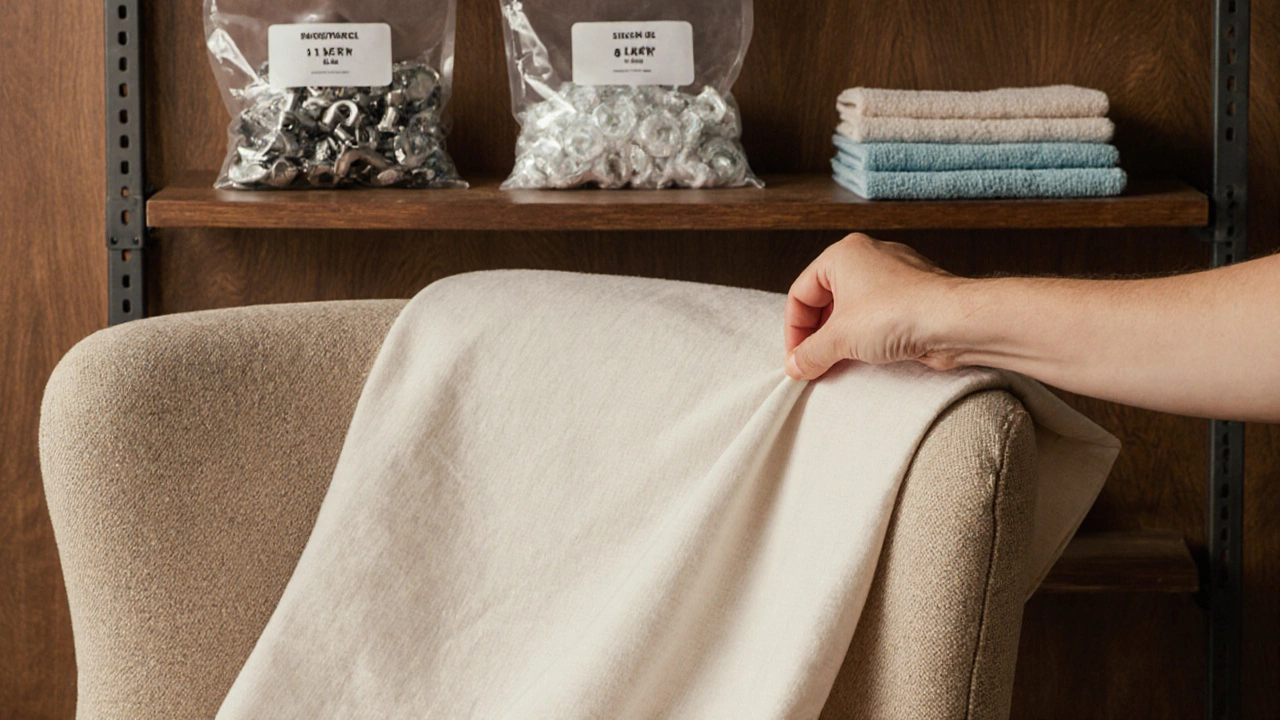
Long-Term Storage (Over 6 Months)
If you’re storing for a year or more, go beyond just covering. Disassemble where possible-remove legs from tables, take apart bed frames. Store screws and hardware in labeled ziplock bags taped to the frame. Wrap each piece individually. Use furniture sliders to move items without dragging. Avoid stacking heavy items on top of upholstered pieces. Rotate cushions every few months if you can access the unit.
For valuable antiques or heirlooms, consider professional climate-controlled vault storage. Regular storage units aren’t built for fine furniture.
What to Do When You Take It Out
Don’t rush to uncover everything at once. Let the furniture acclimate to your home’s humidity for 24-48 hours before removing covers. Vacuum fabric thoroughly. Wipe wood with a slightly damp cloth (never soaking wet). Check for pests-look for tiny holes, droppings, or webbing. If you smell mildew, air the piece outside for a day. Don’t use steam cleaners or harsh chemicals. They can strip finishes or set stains deeper.
Most damage from storage happens in the first 30 days after unpacking-when people assume everything’s fine and rush to use it. Patience here saves you from costly repairs or replacements.
Can I use plastic sheeting to cover my furniture in storage?
Only as an outer layer over a breathable cover. Plastic traps moisture and causes mold, warping, and rust. Never use it directly on fabric, wood, or metal. If you must use plastic, place it over a cotton or non-woven cover to create a barrier without sealing in humidity.
How often should I check on stored furniture?
Every 60 days is ideal. Open the storage unit for 10-15 minutes to let air circulate. Look for signs of dampness, discoloration, or pests. If you notice any mold or odors, remove the furniture immediately and dry it outside in a shaded area.
Is it okay to store furniture in a garage?
Only if it’s climate-controlled and elevated. Most garages experience extreme temperature swings and high humidity. Concrete floors draw moisture upward. If you must store in a garage, use wooden pallets, breathable covers, and moisture absorbers. Avoid storing upholstered or wooden pieces long-term in unconditioned garages.
What’s the best way to store a sofa long-term?
Vacuum it thoroughly, remove cushions, and store them separately in breathable cotton bags. Cover the sofa with a 100% cotton drop cloth or non-woven polypropylene cover. Place silica gel packs inside the cushions. Elevate the sofa off the floor. Never wrap it in plastic. Check it every two months for signs of moisture or pests.
Should I clean furniture before storing it?
Absolutely. Dirt, oils, and food particles attract pests and cause stains over time. Clean fabric with a vacuum and upholstery cleaner. Wipe wood with a dry microfiber cloth and apply a thin layer of wax. Let everything dry completely before covering. Never store dirty or damp items-it’s the fastest way to ruin them.
Final Tip: Think Like a Museum
Museums don’t wrap artifacts in plastic. They use acid-free paper, climate control, and breathable fabrics. They monitor humidity. They avoid direct contact with surfaces. You don’t need a museum budget to protect your furniture-just the same mindset. Your couch, table, or bed isn’t just furniture. It’s something you use every day. Treat it like something worth protecting.
